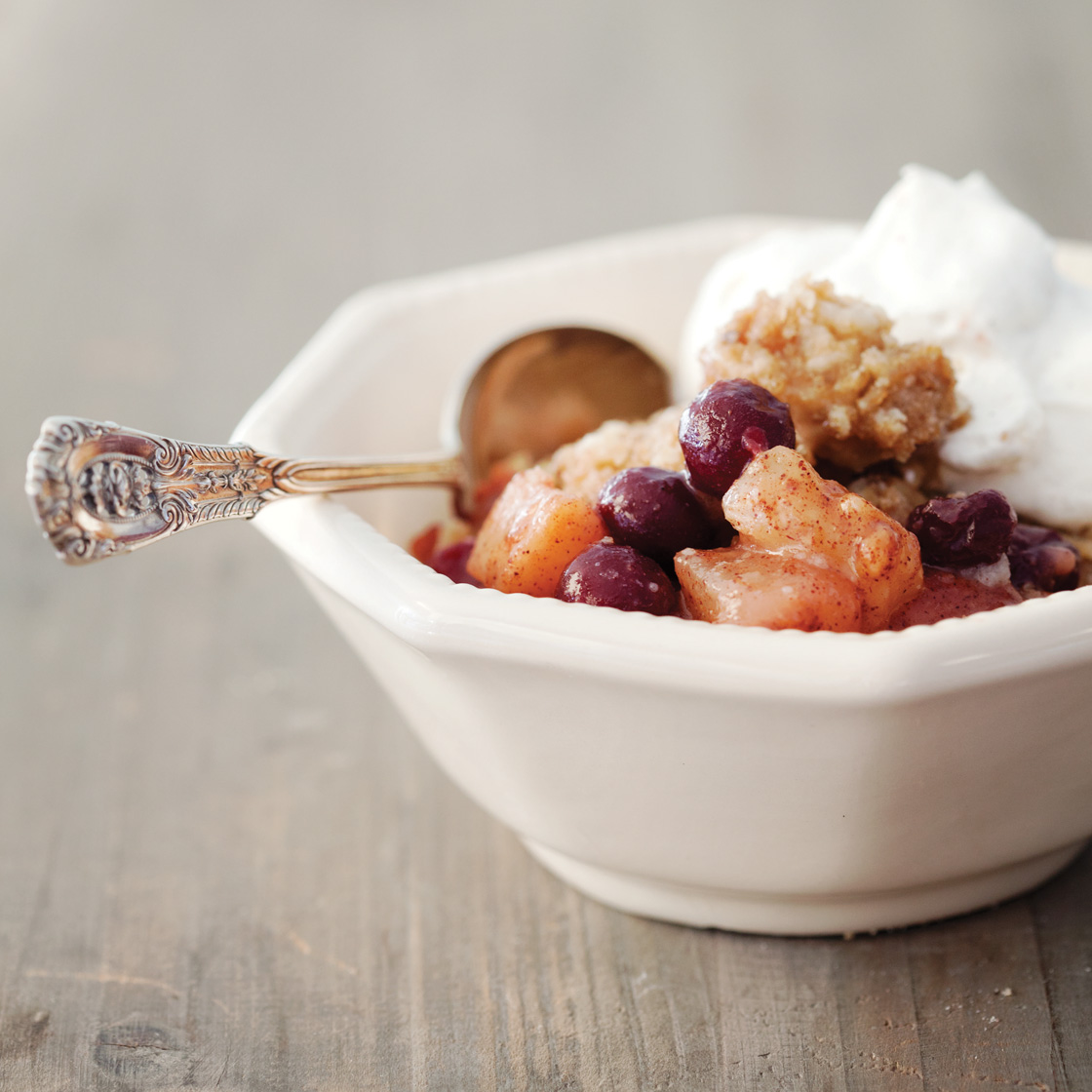
Butter Whirls & Chocolate Twirls
Pear Cranberry Crumble with Cardamom Whip
Pear Cranberry Crumble with Cardamom Whip
The perfect dessert for a damp fall evening when that chill in the air tells you winter is on its way. If you time it right, you will be pulling this dish hot from the oven just as you finish your supper. Scoop up a bowlful and top it with a big dollop of spiced whipped cream. A couple of mouthfuls in and I promise you will have forgotten all about the colder months ahead.
Ingredients
- 6 large pears
(Bosc or Bartlett), peeled, cored and cut in ½–inch cubes - 1½ cups fresh cranberries
- ½ cup dark brown sugar
- ¼ cup water
- 2 tablespoons lemon juice
- 1 tablespoon ground cinnamon
- Zest of 1 lemon
Crumble Topping
- 1½ cups all–purpose flour
- ¾ cup dark brown sugar
- ½ cup butter, chilled and cut into 1–inch pieces
Cardamom Whip
- 2 cups heavy cream
- ¼ cup granulated sugar
- 1 teaspoon ground cardamom
- 2 teaspoons pure vanilla
Print Recipe
- Preheat the oven to 350°F.
- In a large bowl, combine the chopped pears, cranberries, ½ cup sugar, water, lemon juice, cinnamon and lemon zest. Use a wooden spoon or your hands to stir and coat all the fruit with the brown sugar mixture. Place the coated fruit in a buttered 9– x 13–inch baking dish.
- For the crumble topping, in a medium bowl, combine the flour and ¾ cup sugar. Use a pastry cutter or two knives to cut in the chilled butter until large, buttery crumbs are formed. Sprinkle the crumble topping across the top of the fruit.
- Bake for 50 to 60 minutes, or until the juice from the fruit is bubbling up through the crumble topping.
- Meanwhile, prepare the Cardamom Whip. In a stand mixer fitted with a whisk attachment, whip the cream, sugar, cardamom and vanilla on high speed until soft peaks form. Be careful not to look away, as a minute too long and you will be spreading cardamom butter on your toast tomorrow morning.
- Remove the crumble from the oven and prepare to serve with spoonfuls of the Cardamom Whip.
Friends and family will “pear-ly” be able to contain their excitement when you share this recipe on social media. For more easy-to-make recipe ideas, visit americanlifestylemag.com/recipes.
Up Next:
The Heart of Music in the Heart of Fremont: Seattle's Dusty Strings
Excerpted from Butter Celebrates! by Rosie Daykin. Copyright © 2016 by Random House. Excerpted by permission of Alfred A. Knopf, a division of Random House LLC. All rights reserved. No part of this excerpt may be reproduced or reprinted without permission in writing from the publisher.

Posted in Issue 86 Vol 1, Recipe on Aug 29, 2017